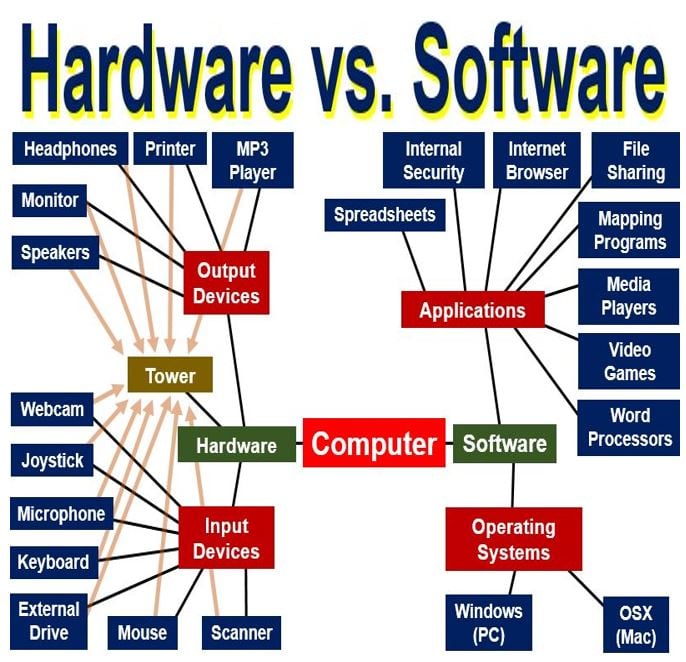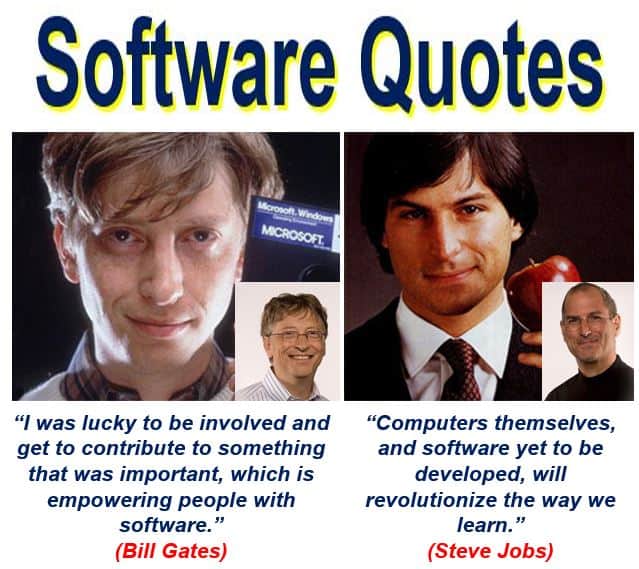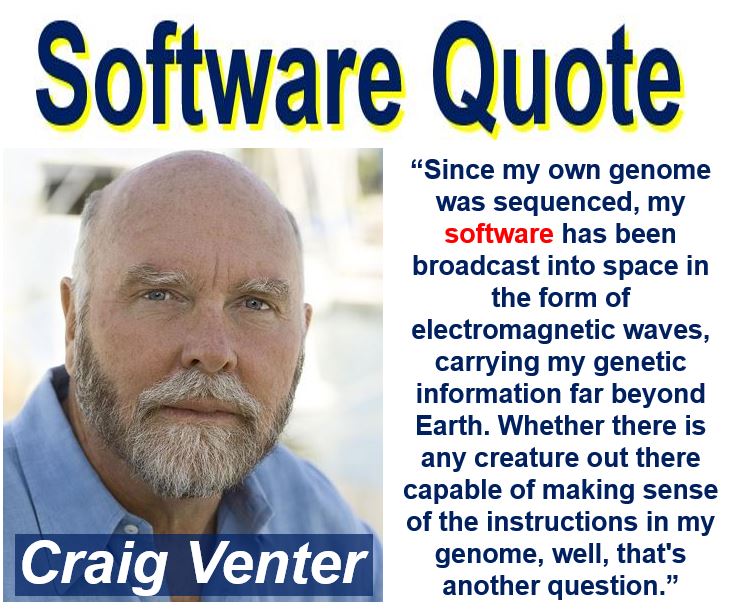Software refers to programs that run on computers and perform specific functions. It is the entire set of programs, procedures and related documentation that computer systems have. Without it, a computer, smartphone, laptop, or tablet would not work. In fact, without it, they would be as useful to you as a manual typewriter. Actually, the typewriter would be more useful because you could write letters with it.
When you buy a computer, the physical parts of it, i.e., the keyboard, modem, and speakers are items of hardware. The CPU is also a hardware item.
The computer programs within it, the parts with encoding and instructions, on the other hand, are the software.
The term may refer to just one specific program or all of a system’s programs and applications. It also includes the operating system itself.

If you want to use WhatsApp on your smartphone, you have to download the relevant computer programs first. All the programs that make your applications (Apps) work belong in the software category.
Hardware vs. software in music
If we look at music, for example, the physical instruments that we can touch and see are the hardware. In other words, the hardware includes the trumpets, violins, guitars, etc.
However, the manuscripts (musical notes written on paper) are the software, i.e., the instructions. However, we do not use the two terms when talking about musical instruments and manuscripts.
Software is variable – Hardware is invariable
Software is the variable part of a computer while hardware as the invariable part, i.e., the part that remains the same.

We usually divide software into application and system software. Application software refers to programs that do the type of work that directly interests the user. System software includes operating systems and any program that supports the application program.
Middleware is the programming that mediates between applications and systems. Middleware also includes programs that allow us to use files from one system in another operating system.
When did the term become popular?
‘Software’ started becoming a common term in the 1960s to distinguish computer hardware from the programs within it.
Alan Turing (1912-1954), a pioneering English computer scientist and mathematician, first proposed the term. Computer specialists refer to Turing today as the ‘father of theoretical computer science and artificial intelligence.’
John Tukey (1915-2000), an American mathematician, first used the term in print in 1958.

Software refers to all the instructions that a technical device – computer, smartphone, etc. – follows. Before we stored it in disks, USB flash drives, or downloaded online, it came on ‘soft media.’ Magnetic discs, magnetic tape, and paper punch cards are examples of soft media.
Firmware is a style of computer program for a specific piece of hardware. We generally store firmware on a flash memory or ROM chip within the electronic device. In your computer, there is firmware for a modem or CD drive.
Software categories
With the continuous development of new programs and applications, the concept of categories has become a challenging topic. There is no set of categories that we all agree upon.
We categorize computer software according to common functions, types, or field of use. The three broad classifications are:
Application software: computer programs for performing tasks such as word processing, drawing, playing or listening to music. Programs for accounting and scheduling are also examples of application software.
System software: this is a generic term for computer programs that we use to start and run computer systems.
Computer Programming Tools: programs that developers use to create, debug, maintain, or otherwise support other applications and programs.
The term generally refers to simple programs that we can combine to accomplish a task. We use these programming tools much as a mechanic might use several hand tools to fix a car engine.
Modern automobiles
Many major car manufacturers across the world report software problems. Sometimes the car simply won’t start, the airbags may inflate when there is no accident or not work when we need them. In my car, something in the system once made the lights suddenly come on.
New technology is great because it allows us to do more things. Technology also saves us having to perform mundane tasks.
However, hi-tech equipment comes with one huge disadvantage; the chances of something going wrong are greater today than before.
If the program for opening and closing my car window suddenly has a glitch, I am stuck. There is no manual-window handle I can use. In other words, I cannot control that window anymore until somebody fixes the program glitch.
A kludge is a ‘quick-and-dirty’ fix to a software problem or bug. It is clumsy, inelegant, and awkward, but (sort of) fixes the problem.
